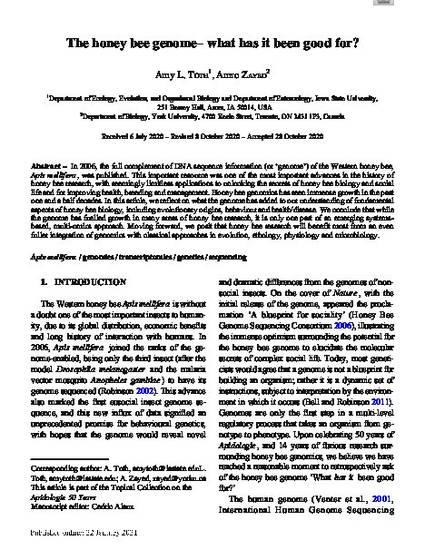
In 2006, the full complement of DNA sequence information (or ‘genome’) of the Western honey bee, Apis mellifera, was published. This important resource was one of the most important advances in the history of honey bee research, with seemingly limitless applications to unlocking the secrets of honey bee biology and social life and for improving health, breeding and management. Honey bee genomics has seen immense growth in the past one and a half decades. In this article, we reflect on what the genome has added to our understanding of fundamental aspects of honey bee biology, including evolutionary origins, behaviour and health/disease. We conclude that while the genome has fuelled growth in many areas of honey bee research, it is only one part of an emerging systems-based, multi-omics approach. Moving forward, we posit that honey bee research will benefit most from an even fuller integration of genomics with classical approaches in evolution, ethology, physiology and microbiology.
Available at: http://works.bepress.com/amy-toth/34/

This article is published as Toth, A.L., Zayed, A. The honey bee genome-- what has it been good for?. Apidologie (2021). doi: 10.1007/s13592-020-00829-3.